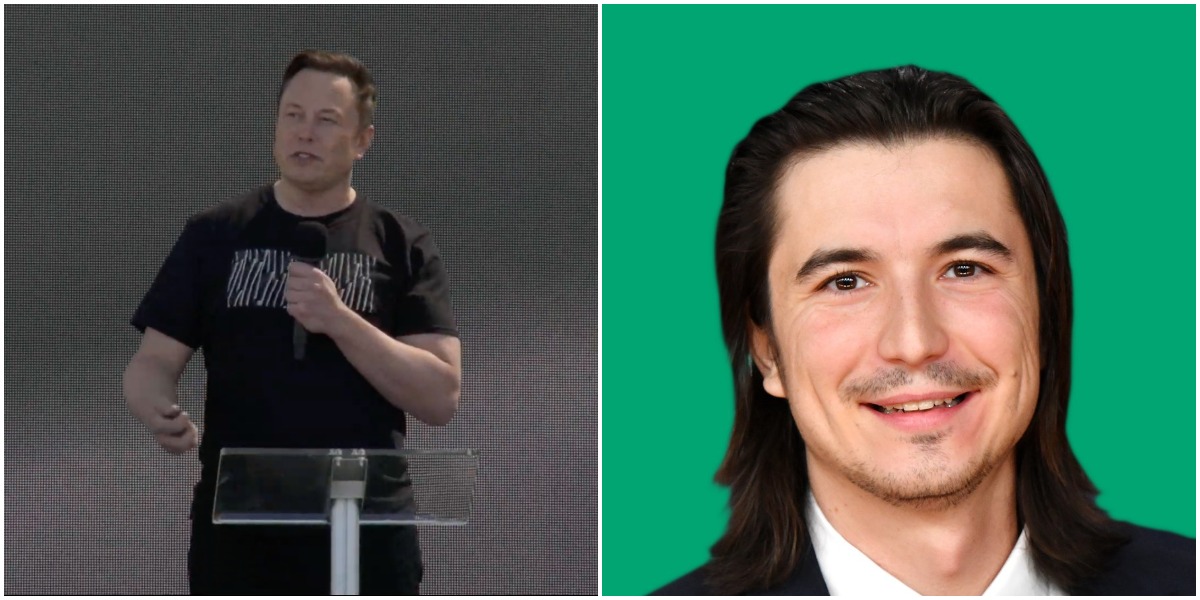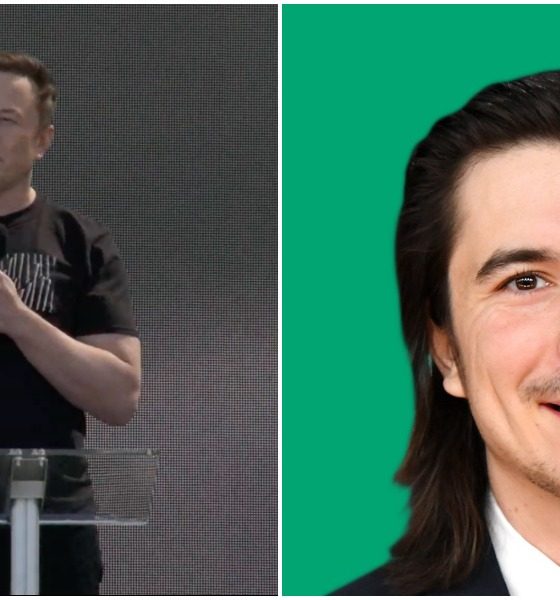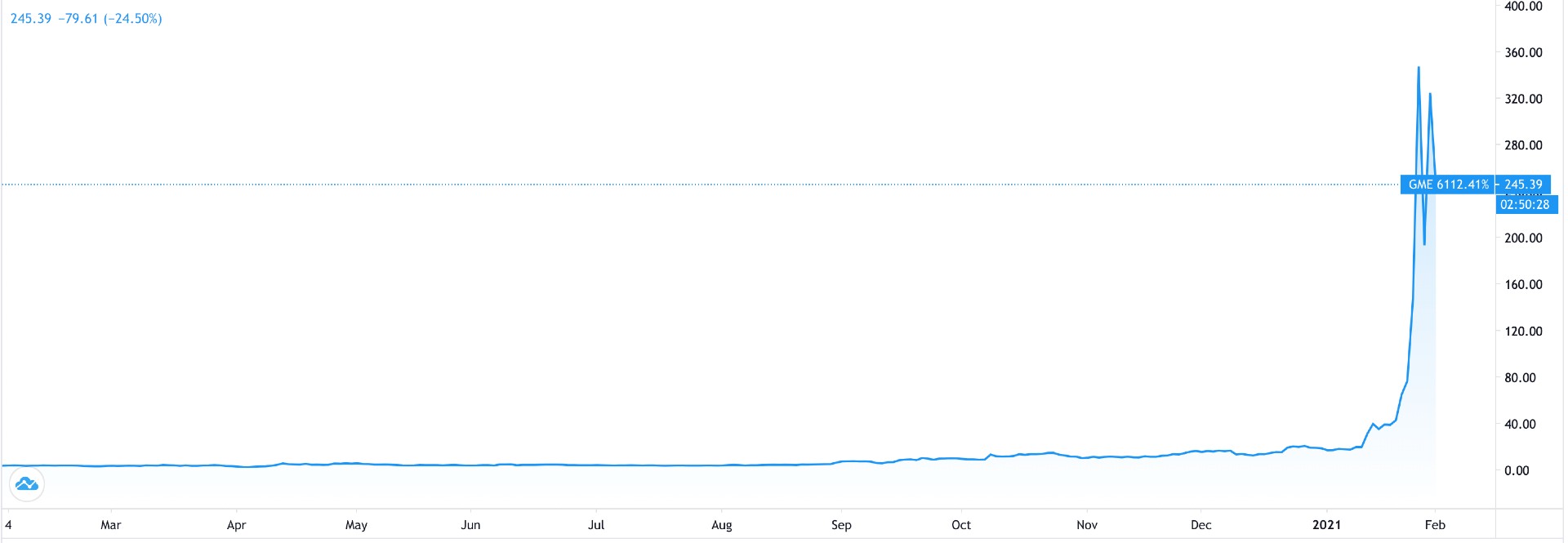

Investor's Corner
Elon Musk gets Robinhood CEO to ‘spill the beans’ on trade restrictions
Tesla CEO Elon Musk convinced Robinhood frontman Vlad Tenev to “spill the beans” regarding spontaneous trade restrictions on stocks during a Clubhouse meeting on Sunday evening. Tenev has been under heavy fire from retail investors who use the Robinhood platform for trading ever since subreddit WallStreetBets has caused several publicly traded companies to skyrocket in value in a pushback against large hedge funds.
“What happened last week? Why can’t people buy the GameStop shares? People demand an answer and want to know the details and the truth,” Musk, who took on a spokesman for the people role, said to Tenev.
After r/WallStreetBets performed a coordinated buying effort on stocks that were being shorted Wall Street hedge funds, shares of GameStop (NASDAQ: GME) skyrocketed. Currently trading at $253, shares were as high as $483.00 at one point, a far cry from the sub $3 levels the stock traded at during Summer 2020.
$GME Stock (Credit: Trading View)
After $GME, $AMC, and many other stocks became the subject of a massive buying pattern from retail investors, Robinhood effectively shutdown trading on these stocks, claiming “high volatility,” sending traders and investors into a frenzy considering their position as a free-market trading platform. Robinhood has been left behind by plenty of people, opting for other brokerages that will allow for restrictions on these stocks without any implications.
Tenev claims that the company “had no choice” on what to do when the platform shut down the possibility of buying certain stocks. After receiving a call from the National Securities Clearing Corporation on Thursday morning, Tenev’s sleep was interrupted by a request for around $3 billion. Musk asked what the reasoning for the sudden capital demand was, and Tenev said he’s still trying to put together the pieces. “Like, it seems a little weird that you’d get a sudden $3 billion demand at 3 in the morning just suddenly out of nowhere,” the Tesla CEO said, according to Yahoo.
“So, it was unprecedented activity. I don’t have the full context about what was going on, what’s going on in the NSCC to make these calculations,” Tenev said to Musk. Eventually, the $3 billion capital raise was negotiated down to less than 50% of that figure. Robinhood and the NSCC landed on $1.4 billion, a slightly easier amount of money to attain.
Elon Musk talks Mars, UFOs, Neuralink, Dogecoin, and more in Clubhouse session
Tenev and Robinhood’s ultimate decision to shut down trading on several stocks that were seeing massive gains for retail investors was questioned by many, including Musk. While the Robinhood traders were making money hand over fist by taking positions in the heavily shorted stocks, hedge funds were feeling the real heat and were taking massive hits. Musk understood the company’s decision to halt trading if Robinhood executives, in fact, had no choice. “If you had no choice, that’s understandable. But then we’ve got to find out why you had no choice and who are these people that are saying you have no choice?”
“To be fair, we were able to open and service our customers. Twenty-four hours later, our team raised over a billion in capital, so that when we do open [Monday] morning, we’ll be able to kind of relax these stringent position limits that we put on these securities on Friday,” Tenev said. “This was a clearinghouse decision, and it was just based on the capital requirements. So, from our perspective, Citadel and other market makers weren’t involved in that.”
Disclosure: Joey Klender is a TSLA Shareholder. He does not own GameStop stock and has no intentions to change any positions within 72 hours.

Investor's Corner
Tesla stock closes at all-time high on heels of Robotaxi progress

Tesla stock (NASDAQ: TSLA) closed at an all-time high on Tuesday, jumping over 3 percent during the day and finishing at $489.88.
The price beats the previous record close, which was $479.86.
Shares have had a crazy year, dipping more than 40 percent from the start of the year. The stock then started to recover once again around late April, when its price started to climb back up from the low $200 level.
This week, Tesla started to climb toward its highest levels ever, as it was revealed on Sunday that the company was testing driverless Robotaxis in Austin. The spike in value pushed the company’s valuation to $1.63 trillion.
Tesla Robotaxi goes driverless as Musk confirms Safety Monitor removal testing
It is the seventh-most valuable company on the market currently, trailing Nvidia, Apple, Alphabet (Google), Microsoft, Amazon, and Meta.
Shares closed up $14.57 today, up over 3 percent.
The stock has gone through a lot this year, as previously mentioned. Shares tumbled in Q1 due to CEO Elon Musk’s involvement with the Department of Government Efficiency (DOGE), which pulled his attention away from his companies and left a major overhang on their valuations.
However, things started to rebound halfway through the year, and as the government started to phase out the $7,500 tax credit, demand spiked as consumers tried to take advantage of it.
Q3 deliveries were the highest in company history, and Tesla responded to the loss of the tax credit with the launch of the Model 3 and Model Y Standard.
Additionally, analysts have announced high expectations this week for the company on Wall Street as Robotaxi continues to be the focus. With autonomy within Tesla’s sights, things are moving in the direction of Robotaxi being a major catalyst for growth on the Street in the coming year.
Elon Musk
Tesla needs to come through on this one Robotaxi metric, analyst says
“We think the key focus from here will be how fast Tesla can scale driverless operations (including if Tesla’s approach to software/hardware allows it to scale significantly faster than competitors, as the company has argued), and on profitability.”

Tesla needs to come through on this one Robotaxi metric, Mark Delaney of Goldman Sachs says.
Tesla is in the process of rolling out its Robotaxi platform to areas outside of Austin and the California Bay Area. It has plans to launch in five additional cities, including Houston, Dallas, Miami, Las Vegas, and Phoenix.
However, the company’s expansion is not what the focus needs to be, according to Delaney. It’s the speed of deployment.
The analyst said:
“We think the key focus from here will be how fast Tesla can scale driverless operations (including if Tesla’s approach to software/hardware allows it to scale significantly faster than competitors, as the company has argued), and on profitability.”
Profitability will come as the Robotaxi fleet expands. Making that money will be dependent on when Tesla can initiate rides in more areas, giving more customers access to the program.
There are some additional things that the company needs to make happen ahead of the major Robotaxi expansion, one of those things is launching driverless rides in Austin, the first city in which it launched the program.
This week, Tesla started testing driverless Robotaxi rides in Austin, as two different Model Y units were spotted with no occupants, a huge step in the company’s plans for the ride-sharing platform.
Tesla Robotaxi goes driverless as Musk confirms Safety Monitor removal testing
CEO Elon Musk has been hoping to remove Safety Monitors from Robotaxis in Austin for several months, first mentioning the plan to have them out by the end of 2025 in September. He confirmed on Sunday that Tesla had officially removed vehicle occupants and started testing truly unsupervised rides.
Although Safety Monitors in Austin have been sitting in the passenger’s seat, they have still had the ability to override things in case of an emergency. After all, the ultimate goal was safety and avoiding any accidents or injuries.
Goldman Sachs reiterated its ‘Neutral’ rating and its $400 price target. Delaney said, “Tesla is making progress with its autonomous technology,” and recent developments make it evident that this is true.
Investor's Corner
Tesla gets bold Robotaxi prediction from Wall Street firm
Last week, Andrew Percoco took over Tesla analysis for Morgan Stanley from Adam Jonas, who covered the stock for years. Percoco seems to be less optimistic and bullish on Tesla shares, while still being fair and balanced in his analysis.

Tesla (NASDAQ: TSLA) received a bold Robotaxi prediction from Morgan Stanley, which anticipates a dramatic increase in the size of the company’s autonomous ride-hailing suite in the coming years.
Last week, Andrew Percoco took over Tesla analysis for Morgan Stanley from Adam Jonas, who covered the stock for years. Percoco seems to be less optimistic and bullish on Tesla shares, while still being fair and balanced in his analysis.
Percoco dug into the Robotaxi fleet and its expansion in the coming years in his latest note, released on Tuesday. The firm expects Tesla to increase the Robotaxi fleet size to 1,000 vehicles in 2026. However, that’s small-scale compared to what they expect from Tesla in a decade.
Tesla expands Robotaxi app access once again, this time on a global scale
By 2035, Morgan Stanley believes there will be one million Robotaxis on the road across multiple cities, a major jump and a considerable fleet size. We assume this means the fleet of vehicles Tesla will operate internally, and not including passenger-owned vehicles that could be added through software updates.
He also listed three specific catalysts that investors should pay attention to, as these will represent the company being on track to achieve its Robotaxi dreams:
- Opening Robotaxi to the public without a Safety Monitor. Timing is unclear, but it appears that Tesla is getting closer by the day.
- Improvement in safety metrics without the Safety Monitor. Tesla’s ability to improve its safety metrics as it scales miles driven without the Safety Monitor is imperative as it looks to scale in new states and cities in 2026.
- Cybercab start of production, targeted for April 2026. Tesla’s Cybercab is a purpose-built vehicle (no steering wheel or pedals, only two seats) that is expected to be produced through its state-of-the-art unboxed manufacturing process, offering further cost reductions and thus accelerating adoption over time.
Robotaxi stands to be one of Tesla’s most significant revenue contributors, especially as the company plans to continue expanding its ride-hailing service across the world in the coming years.
Its current deployment strategy is controlled and conservative to avoid any drastic and potentially program-ruining incidents.
So far, the program, which is active in Austin and the California Bay Area, has been widely successful.








